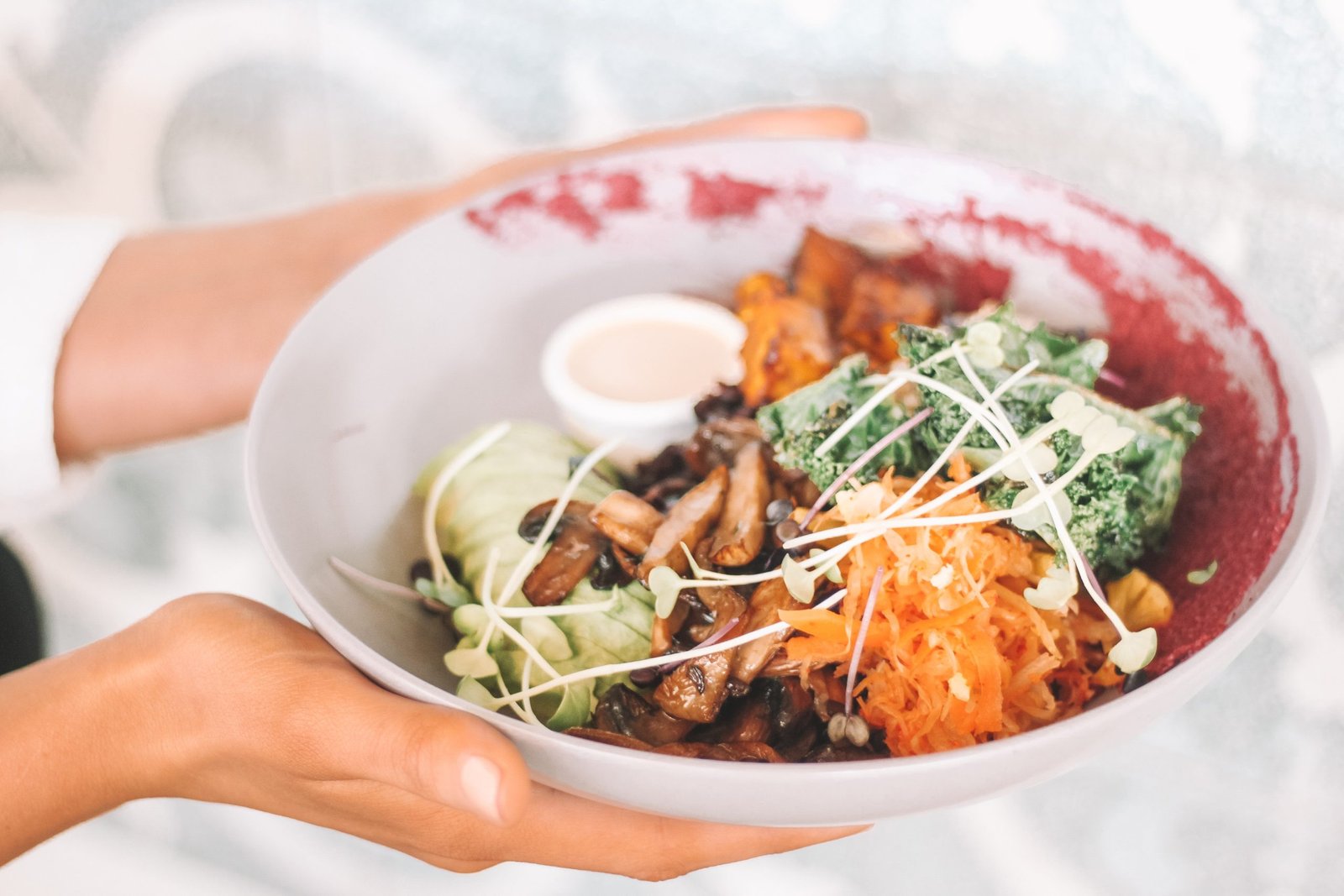I don’t think there’s anything more frustrating than making an effort to be eating healthy consistently but still struggling with acne – especially if you know people who don’t eat well and have perfect skin! When this happens it’s common to feel like the journey to finally achieve clear skin is just a very unrealistic dream. But please don’t give up on your skin just yet. You can clear your acne naturally through nutrition, but there are a few reasons why you’re not yet receiving the rewards of your healthy diet.
Why do I get acne even though I eat healthy?
First up, a quick science lesson into how your skin gets the nutrients it needs to create healthy skin cells. There are three main layers to the skin, the epidermis, dermis and hypodermis. At the base of the epidermis, new skin cells are made. The process of making new skin cells is quite a demanding job, and needs a lot of nutrients such as healthy fats, proteins, vitamins A, C, D and E, as well as minerals Zinc, Selenium and Copper. These nutrients are delivered to the base of the epidermis via the bloodstream. And how do these nutrients end up in the bloodstream? Well, you’ll eat nutrients from all those whole foods you’re eating, and then they have to be absorbed via the gut into the bloodstream.
So it looks a little like this:
- Step 1 – You eat food with nutrients
- Step 2 – Your digestive system breaks down and absorbs the nutrients
- Step 3 – The nutrients go into the bloodstream and travel to the skin
- Step 4 – Your skin has the nutrients it needs to create healthy skin cells.
That’s where it might be going wrong for you – Step 2. The absorption part. If you’re struggling to absorb your nutrients, you can be eating healthy but still have acne (because your skin isn’t getting the nutrients it needs!).
How digestive issues can affect acne
There are a few different systems and organs of the body involved in the absorption of nutrients, and you need to work out where it’s going wrong.
1) The Mouth
The first area we can see it go wrong is in the mouth! Within the saliva, we have the digestive enzyme amylase that helps to break down carbohydrates and sugars. I know it sounds too simple to make such a huge difference, but if you’re not chewing your food correctly you’re going to be swallowing larger bits of food. And I know, we all think that because our stomach is acidic it will just dissolve everything that enters, but that’s not true. If you don’t chew your food properly you’re giving your stomach more work to do, and it slows down the digestive process, which can lead to partially digested food particles moving into the intestine causing bloating, microbiome imbalances nutrient absorption.
2) The Stomach
The second area we need to look into is your stomach. If stomach acid production isn’t optimal, it starts to affect how well you break down proteins, absorb minerals such as zinc and iron, and active vitamins such as B12. Issues with digestive function is really common in people with acne, and one of the main reasons you can be eating healthy but still struggle with acne.
There are few reasons why stomach acid production can shift out of balance. This includes:
- Infections such as H pylori
- Certain medications (such as PPI’s)
- Stress
- Gastritis or stomach ulcers
- Not chewing your food properly!
- Overgrowths of bacteria
- Nutrient deficiencies (Zinc and B vitamins are needed for stomach acid production)
Symptoms of stomach acid issues include:
- Burping after meals
- Sulfur-smelling wind/gas
- Feeling excessively full after eating normal or small portions
- Feeling like you have a ‘brick in your belly’ after eating
- Nausea (especially in the morning)
- Reduced appetite
- Heartburn or acid reflux
3) The Pancreas
The organ is usually only associated with blood glucose regulation, and spoken about more if someone has a form of diabetes. But, the pancreas actually produces digestive enzymes such as protease (to digest protein), lipase (to digest fat), and amylase (to digest carbohydrates). The pancreas can struggle to produce enzymes due to:
- Chronic or Acute Pancreatitis
- IBD or Coeliac disease
- Diabetes
- Gallstones
Some symptoms of pancreatic dysfunction include oily, fatty or light-coloured stools.
4) The Liver & Gallbladder
I bet you didn’t think all these organs were involved in how well your skin gets the nutrients it needs! But the liver and gallbladder both play a role in nutrient absorption for skin health too. Both of them are involved in bile production and secretion. The liver will create bile and send it to the gallbladder for it to be stored. Bile helps to break down larger fat molecules so that they can be correctly absorbed. When we eat a meal that contains fat, the gallbladder contracts to release bile to help with the digestion and absorption of fats. There are a few reasons why your bile flow might become a bit sluggish, including:
- Low levels of nutrients needed to create bile (such as taurine)
- Imbalances or inflammation of the liver
- A diet low in healthy fats
- Small Intestinal Bacterial Overgrowth (SIBO)
- Gallstones
Some symptoms of bile imbalances, or issues struggling to digest fats include:
- Constipation
- Loose stools
- Dry skin
- Overgrowth of bacteria in the gut (bile has antimicrobial properties!)
- Nausea
- Bloating
- Low tolerance to high-fat meals
5) The Intestinal Lining
The final component of absorption is where the majority of it happens – in the small intestine. The small intestine contains microvilli which are these tiny finger-like projections that assist which absorbing all our vitamins and minerals. In coeliac disease, the microvilli become severely damaged in response to gluten in the diet, which hugely affects the absorption of nutrients. However, damage to the intestines can happen in people who don’t have inflammatory bowel disease or are coeliac. Damage to the intestine can happen due to:
- Eating foods that you’re intolerant/sensitive to
- Certain medications
- Overgrowths of bacteria in the intestines
- Stress
- Nutrient deficiencies (the intestines need vitamins A, C, D and minerals such as zinc)
- A diet low in fibre and high in sugar or refined carbohydrates
- High alcohol intake
- Prolonged use of antibiotics
Symptoms of a damaged gut lining can really vary, you may experience:
- Nutrient deficiencies
- Abdominal pain
- Symptoms of inflammation
- Bloating
- Fatigue
- Skin issues
- Increased food intolerances and allergies
How to support digestion to clear acne
I really hope this has helped to shed some light on what can feel like the never-ending acne tunnel. If you’re eating healthy but still have acne, there is most likely something deeper going on that food alone can’t fix. And this is where supplements work their magic.
Seeing that big list of everything that could be off balance might feel a bit overwhelming, but that’s where I can help. As a nutritionist I dive deep into all of your symptoms, which can help to connect the dots of what might be off-balance. After we’ve done an initial consultation, we can look into getting some tests done (such as a gut test), which will give you even more insight into where exactly your digestive symptom needs support. So that you can continue to eat healthy and clear your acne. If you’d like to find out more about working together, check out the consultations page, or drop me an email.





0 Comments